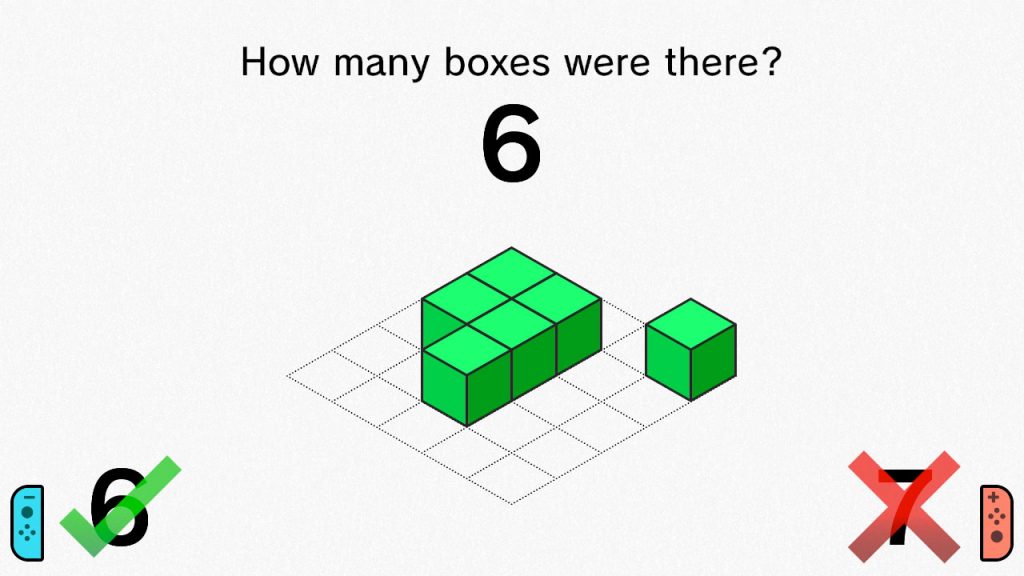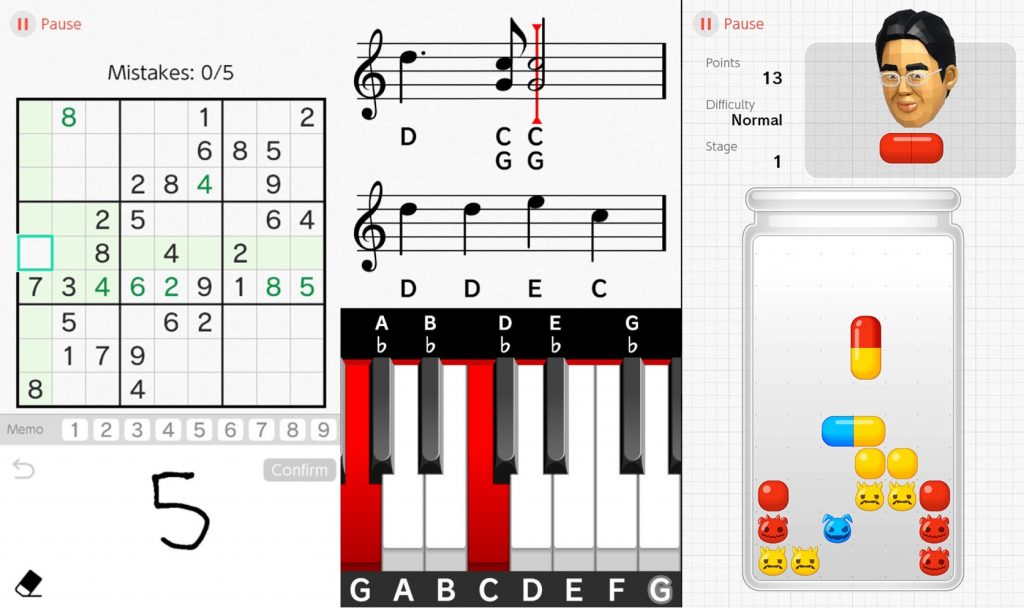Dr. Kawashima’s Brain Training is back and has just been released on Nintendo Switch. Originally released back in 2006 onto the Nintendo DS, the game features old and new exercises, and everyone’s favorite brainy, floating head – Dr. Kawashima. Coming with a stylus for use with the Nintendo Switch, this version has just hit stores. However, is there fun to be had or will players just be left scratching their head? Here’s our Dr. Kawashima’s Brain Training Review.
Dr. Kawashima’s Brain Training still uses the same player journey, with the majority of the Brain Training content initially locked. At the start, players will only have access to a few activities (Quick Maths, Sudokus and Reading Aloud). The Brain Training classic Germ Buster mode is swiftly unlocked. otherwise, the first few plays have a very natural stop. While most games try every trick to keep you playing this is a refreshing change – and a clearly conscious decision to maintain it from the rest of the series.
Once-daily exercises such as headcount, and the mentioned quick maths, are done players can learn their brain age. By performing three exercises, back to back, across different categories the game calculates your age. Players will have their self-control, short term memory and processing speed checked, each giving the player an age rating. These then combine into an overall age, which at the peak is 20 years old. Don’t be off-put when the game suggests an age vastly above your own, the aim is to train your brain back towards youthfulness.

A small range of multiplayer exercises is included, as part of a quick play area. These range from rapidly counting birds or blocks to waving Joy-Con flags, testing players’ memory and reflexes at the same time. These, like the main game experience, are great for short bursts of fun. Still, the limited choice results in exercises mean it won’t grab players for long, especially when on Switch you could easily swap to something like Mario Kart. For those who love a bit of friendly competition Dr. Kawashima’s Brain Training has you covered. Each exercise has a scoreboard system, allowing gamers to clock their best times. Be it attempting to beat a previous personal high score, or another player’s score, this does add something extra for players to do.
For some, the inclusion of a stylus may not sound like a big deal. The experience could just about work without it, but it feels closer to the 3DS experience as a result. The stylus makes many of the activities more intuitive, allowing all brainpower to go towards the exercises. Take the sudoku puzzles as an example. Many will be used to pen and paper versions, scribbling potential numbers down. The stylus allows that exact same process to be used, even allowing those who would say they don’t like to play games to enjoy the experience.
IR exercises create rather unique feeling tasks. Holding one joy-con, so that the motion camera in the controller can see the other hand, players will count or even play Rock, Paper, Scissors. This is a prime example of the new exercises that have been added to this edition of Brain Training. While much of the title feels like the old games, this uses the technology available in the Switch in a way I’d not encountered below, adding a fun twist to the console as well as the game.

One thing to note is that the majority of the exercises cannot be played while the Switch is docked. Most require the player to input something via writing it, rather than just a joy-con button press. For example, during the mental maths style tasks, players must write the correct number using the stylus onto the screen. The quick player, multiplayer, exercises allow for docked – which does make this easier though.
Presentation-wise Dr. Kawashima’s Brain Training features a clean, easy to use UI. At all times it is obvious what to do during the exercises, where to click or tap and how to access something. Each activity fills the screen with the only content there to distract you from part of the self-control elements of the exercises. This is added to the music which is mostly rather peaceful, as to not distract you from what’s on-screen.
Dr. Kawashima’s Brain Training Review – Verdict
Dr. Kawashima’s Brain Training will be a welcoming experience for new and experienced players. For those that have played the games before there might not be a wave of newness. Nevertheless, the game puts you straight back into the mentality of slowly improving your brain age. The exercises can be hard, the Sudokus can be brain-burning – though there are others to relax to. Dr. Kawashima’s Brain Training won’t captivate players for hours on end but it has the potential to keep players coming back for their 30 minutes of brain training every day.
(Editor’s Note: Dr. Kawashima’s Brain Training was provided to us for the review.)
